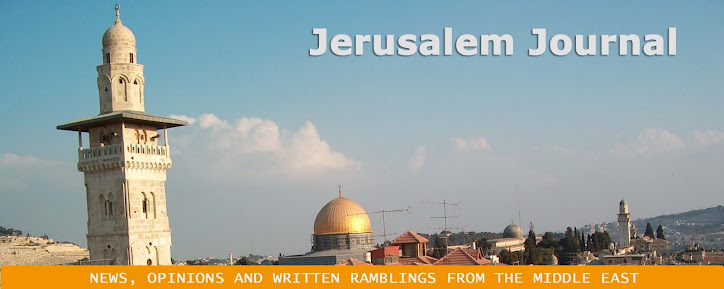While I was in Jenin facing not a hint of terrorism, Tel Aviv was under a terrorist threat that shut down the city on Tuesday. The threat went largely unreported because it was just that, a threat. Had it been more, we would've heard more. Police arrested three Palestinians at the scene.
So imagine my surprise when I found out today that two Palestinian masterminds behind the attack were previously pardoned by Prime Minister Ehud Olmert.
Also, WorldNetDaily reporter Aaron Klein quoted a senior member in the Al Aksa Martyrs' Brigades who said that Hizballah helped pay for the planned attack. The Islamic Jihad terrorist group in Jenin coordinated the planned attack with Al Aksa, but did not take the usual credit because of the prime minister's plan to free another 250 terrorists as a "goodwill" gesture to the Palestinians, Klein explained.
Another terrorists involved in planning the attack was Mohammed Abu Drei, who was killed by the Israeli army in a counterterrorist operation in Nablus earlier this week.
According to Israel National News:
The PA ostensibly has taken responsibility for maintaining law and order in Nablus and Jenin, but the deployment of armed special forces has mostly acted as a showcase for the United States and the PA to convince Israel that terror is under control. However, while the special forces fight crime, they do [not deal with counterterrorism (my words)].
The planned Tel Aviv bombing was to be carried out with explosives that police discovered in a bag after the initial arrest of a Jenin resident in a house near Tel Aviv.
Government spokesmen announced that Islamic Jihad was behind the foiled operation and did not make any mention of Fatah, which the Olmert administration is trying to prop up through concessions and counterterrorist operations aimed mostly at rival terrorist gangs.
The pardoned terrorist who was arrested is Ahmed Amire, a member of Al Aqsa from Jenin and who may have provided Israeli intelligence with more information about the imminent attack. Prime Minister Olmert granted amnesty to him, and to Drei as well as more than 100 comrades from Al Aqsa in return for a promise to turn in their weapons, remain in the custody of the PA for three months and not return to terrorism.






